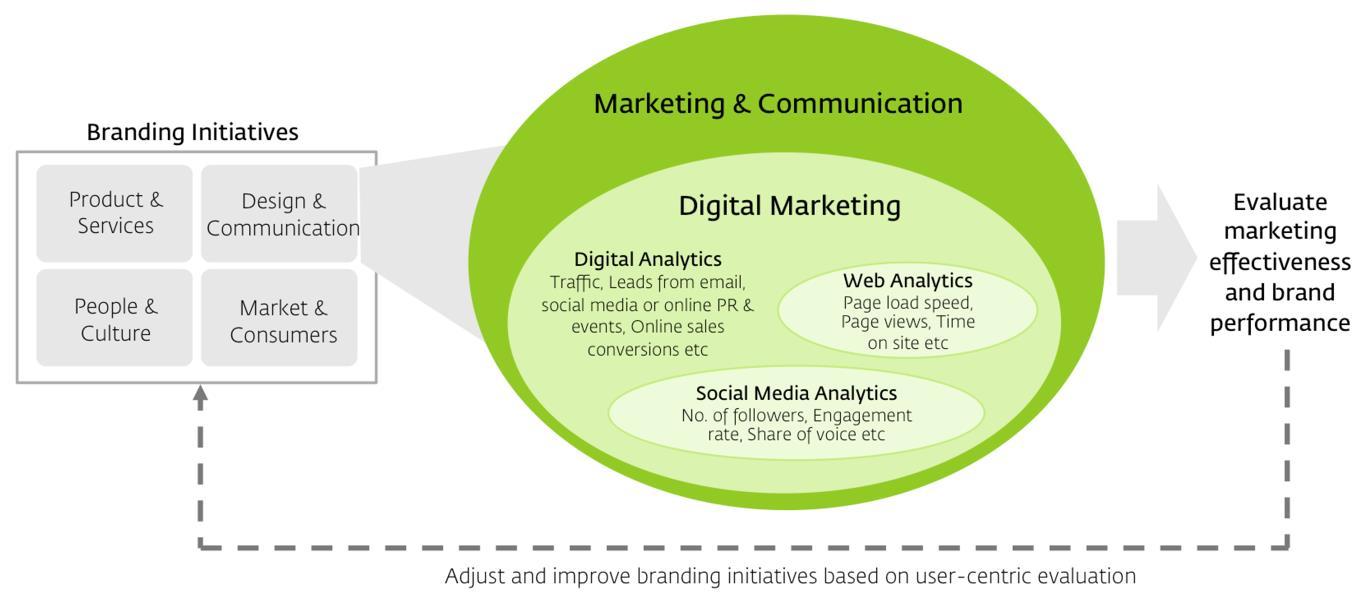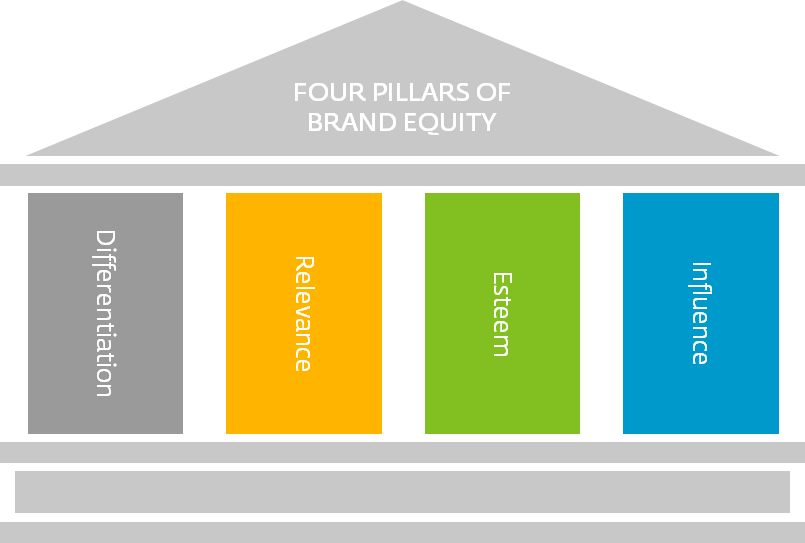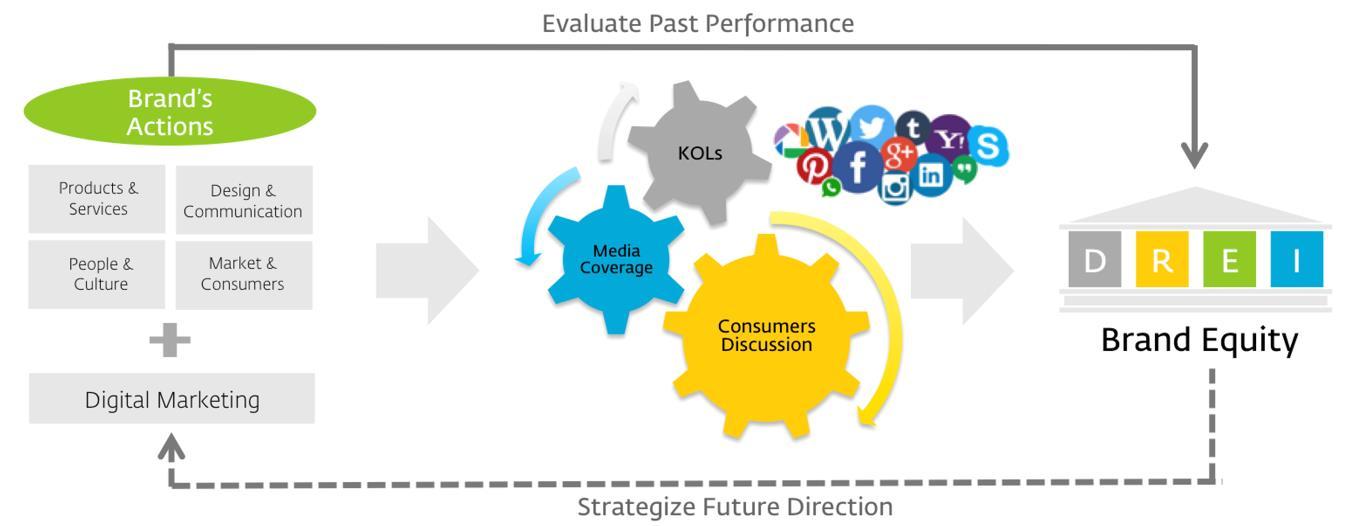

Unlock the power of ‘Social Brand Equity’ with Airbnb, recognized with a prestigious Gold in the Instagram category at the Shorty Awards. Embodying their brand proposition, ‘Belong Anywhere,’ Airbnb strategically leverages its global Instagram presence (@Airbnb). Here, the brand not only shares captivating stories deeply rooted in humanity but also cultivates wonder and awe. Witness firsthand the mastery of social media branding as Airbnb crafts and curates authentic narratives, showcasing real people’s experiences. Join the digital marketing revolution and explore how Airbnb’s innovative approach not only earns accolades but also establishes and enhances its social brand equity across diverse social media platforms.
Join the league of brands embracing the power of social media in their integrated marketing strategies, a trend exemplified not only by Airbnb but by a multitude of forward-thinking companies. In a landscape defined by the ascendancy of social media platforms and technological innovations such as virtual reality, augmented reality, HTML 5, geo-tagging, and IoT connectivity, brands now have abundant opportunities to meaningfully engage and interact with users online. Explore how this dynamic convergence of technology and social media is reshaping the marketing landscape, providing brands with unprecedented avenues to connect, resonate, and build social brand equity in the digital age.

Airbnb’s Instagram account
In an era where social media marketing retains its cost-effectiveness over traditional advertising, and with a growing global audience engaging with their preferred platforms to critique, praise, and champion beloved brands, the once-effective marketing channels are becoming increasingly saturated. As brand builders, the challenge lies in navigating this noisy landscape, steering clear of ad-hoc, hit-or-miss campaigns. The key is ensuring that digital marketing efforts remain agile, evolving in tandem with social sharing platforms and the dynamic preferences of users. Stay ahead of the noise, crafting strategies that not only resonate but also stand out, ensuring sustained relevance in the ever-evolving realm of social media marketing and fostering enduring social brand equity.
It is important to note that digital marketing or social marketing should not be an isolated function. These are actually subsets within the overall umbrella of brand marketing. Hence, one must avoid the mistake of jumping onto the digital marketing bandwagon without an integrated cross-channel marketing plan that is aligned with the overall brand proposition. While a focus is indeed on engaging the consumers, we also want to make sure that we are engaging them in the right direction so that perceptions formed around the brand are steered towards the brand idea that we have set off with.

Key considerations of digital marketing analysis
Navigate the dual impact of technological advancement with a strategic focus on building ‘Social Brand Equity.’ Technology not only facilitates dynamic brand interactions but also empowers consumers to engage in immediate, 24/7 commentary, sharing, and feedback across various online touchpoints. In the vast realm of blogs, forums, and social media platforms, the World Wide Web has transformed into a colossal consumer research ground. Enter the realm of social listening, a practice that involves scouring the web and social spaces to analyze discussions around a brand. Harness the power of big data social listening and quantitative analytics to evaluate the effectiveness of past marketing endeavors and overall brand performance. These actionable insights, derived from past performance, create a valuable feedback loop, shaping the trajectory of future branding and marketing initiatives for sustained social brand equity.

User-centric evaluation of online branding efforts
Before you rejoice over the fact that you are already tracking or evaluating the performance of your digital marketing efforts with Google or web analytics, below are 5 common mistakes that marketers tend to make.
The need for regular monitoring of the brand performance is often underestimated, with focus left to only major events or campaign in a given year. Evaluation of digital marketing falls upon metrics tied to campaigns and media buy in the likes of exposure, potential reach and number of shares. This only sheds light on fragmented campaign-related results that the marketing team has to piece together with other evaluations, if any, to get an overall brand performance. Brand-building is a consistent effort whereby every incident and interaction with the brand matters. Two well-performed major events over 4 days are not going to entirely compensate for the slip-ups the brand has over the rest of the 361 days.
In the constant pursuit for improvement, brands tend to set KPIs and metrics and seek to grow these numbers. This may result in artificial performance-boosting of the brand. For example, an increase in number of mentions might not necessary mean an improvement in the brand performance; when we start to analyze the content of these mentions and actually realize an increase in negative sentiment in discussions of the brand.
Be it tactical messages or strategic brand messages, you will also want the consumers to find these messages to be of a high relevance fit to them. High relevance content has the power to strengthen loyalty, engagement and advocacy while run-of-the-mill standard messages do just the opposite. Pushing out of pre-determined content that has been planned 6 months in advance, rather than listening to the types of content that appeals to the target audiences is not going to help increase relevance. Looking only at quantitative tracked metrics is certainly not going to help either. This requires a deeper analysis into the content that people are talking about, be it in the category that your brand is in, or general social culture trends.
While many brands are said to be customer-oriented, many of the internal processes and mindsets have not shifted to one that is truly customer-oriented. Evaluation of brand performance is based on business-focused metrics like sales conversion rates and number of shares instead of seeking insights based on customers’ pain points, desires and experiences with the brand. The key is to know your customers’ needs and preferences and translate them into highly relatable, human-oriented experiences in the digital space. Knowledge and evaluation of the right metrics and data inputs set you on the right track towards being a love mark that is embraced by your customers.
Very often, departments within an organization lack closer collaboration: they do not share data and insights with each other. Many digital marketers focus on tactical short-term applications of insights derived from digital marketing effectiveness evaluation to further improve future marketing and PR initiatives. But discussions of your brand on the Internet are definitely not limited to how your advertising campaign is being received: discussions also revolve around customers’ purchase, usage and after-sales service experience, or simply on the brand’s product design and features. Big data social listening analysis can help you in all dimensions of the brand, from product and service design, to service at retail front and users’ perceptions and comparison of your brand vis-à-vis competitors.
Instead of having multiple tracking and measurement evaluations that either give you a fragmented picture or have little linkage to your brand, invest in something that empowers you to build your brand – Social Brand Equity.
Social Brand Equity is a measure of brand equity that your brand has accumulated over time in the online social space. This Social Brand Equity value varies over time depending on the interactions and experiences that consumers have with your brand over time. To help companies in brand management, brand equity can be further broken down to four main pillars – Differentiation, Relevance, Esteem and Influence.

Four pillars of brand equity
Adopted from the traditional brand equity model, Social Brand Equity takes into account the unique characteristics of the social media space that begets changes to how each pillar should be interpreted and measured. In a nutshell, each of the pillars of Social Brand Equity is a study of the following:
The true value of Social Brand Equity comes not in the form of quantifiable ROI or KPIs for the marketing department, but as a brand management tool for the whole organization from a consumer-oriented approach. It evaluates your brand performance in the Internet social space, owned and earned media, through both analytics metrics and qualitative analysis of the types of discussion revolving around your brand versus competitors.
With this knowledge of past performance and insights derived from consumers’ discussion, it forms a closed loop, empowering various functions within the organization to strategize and adjust future implementations.

Digital marketing feedback loop
Below are some examples of which big data analysis tools of the Social Brand Equity could empower the team:
Brands have been tracking brand equity for a long time through consumer focus groups and surveys. While it provides a targeted evaluation of the brand, it can be costly to implement holistically for brands on both extremes of the spectrum –international brands with presence in various countries due to the scope required, and small brands with limited budget due to the price of properly designed research methods. Social brand equity tracking is then a good alternative or complementary method for brand equity tracking, especially for consumer brands with a huge volume of discussion on the Internet and social media spaces.
Traditional Brand Equity
Social Brand Equity
In conclusion, no detail is too small when it comes to shaping social brand equity. The cumulative impact of these small details forms the foundation of a robust brand experience. While the broader strategic direction and brand-building initiatives take the spotlight, it’s crucial to zoom in on monitoring and evaluating these minutiae to gain insights into the bigger picture. Don’t limit evaluations to major campaigns or generic analytics metrics—dig deeper for implications that resonate with brand-building efforts.
Reimagine your approach by harnessing the power of the world’s largest ‘focus group.’ Empower your team to directly monitor and build brand equity by valuing every individual and comment. Whether it’s a meticulous critic suggesting improvements or a nostalgic enthusiast reminiscing about a past journey, each interaction contributes to brand perception. In the vast expanse of the internet, ensure your tracking method is as expansive as your brand aspirations for comprehensive social brand equity.
A Labbrand Group Company © 2005-2024 Labbrand All rights reserved
沪ICP备17001253号-3* Will be used in accordance with our Privacy Policy
To improve your experience, we use cookies to provide social media features, offer you content that targets your particular interests, and analyse the performance of our advertising campaigns. By clicking on “Accept” you consent to all cookies. You also have the option to click “Reject” to limit the use of certain types of cookies. Please be aware that rejecting cookies may affect your website browsing experience and limit the use of some personalised features.